本文由 studiolibani 授权mooool发表,欢迎转发,禁止以mooool编辑版本转载。
Thanks studiolibani for authorizing the publication of the project on mooool, Text description provided by studiolibani and Civil Architecture.
Civil Architecture + studiolibani:迷你天堂(Minor Paradises)是2019年10月安曼设计周期间,展出的一个公共花园装置。本期的策展人努尔拉·阿尔·赛义德·霍尔特罗普(Noura Al Sayeh Holtrop)邀请Civil Architecture和studiolibani,根据主题“可能性”,在拉斯·阿尔·艾因画廊(Ras Al Ain Gallery)的入口广场设计一个720平方米,为期一周的花园装置。
Civil Architecture + studiolibani:Minor Paradises is a public garden installation that took place during Amman Design Week, October 2019. The curator of this edition, Noura Al Sayeh Holtrop, commissioned Civil Architecture (a cultural practice in Bahrain-Kuwait) and studiolibani (a landscape architecture firm in Lebanon) to present a full-scale, week-long installation occupying 720 square meters (7750sq ft) of the entrance plaza at Ras Al Ain Gallery, under the theme ‘Possibilities’.


面对目前约旦等阿拉伯国家水资源短缺、甚至没有,或者难以获得的现实困境,我们该如何重新想象我们的公共空间和户外集体文化生活?如何重新打造干旱时期的花园?在这样的背景下,有着丰富水源和茂盛植被的花园,就是当地人向往的天堂。
中东和北非是世界上最缺水的地区,且随着全球气候变化——气温上升周期更长、更频繁,再加上不可预测的降雨模式——水资源危机已经达到前所未有的程度。根据世界资源研究所(World Resources Institute)的数据,约旦在全球面临最大水资源压力的国家中排名第五。在约旦,主要的水源来源于地下蓄水层,而由于农业生产过度开采地下水,加上年降水量减少(每年不足50毫米)、规划不良和增长,含水层的补充持续减少,使该国面临严重的水源压力。
In a reality where water is short, absent, or inaccessible, how do we begin to re-imagine our public spaces and the culture of collective life in the outdoors? How do we begin to re-imagine the idea of a garden in a time of drought, in a context where the garden, in fact, in its abundance of water and lush vegetation, is in itself a manifestation of Paradise.
The Middle East and North Africa is the most water-stressed region in the world. With the imminent impact of climate change – longer and more frequent periods of rising temperatures coupled with unpredictable rain patterns- the water crisis has reached unprecedented levels. Jordan ranks fifth worldwide in nations facing greatest water stress, according to the World Resources Institute. In Jordan, aquifers are the main water supply. The over-exploitation of underground water primarily for agricultural production, combined with reduced annual precipitation levels (less than 50mm per year), poor planning, and a growing population, continue to diminish the replenishment of the aquifers, rendering the country under critical pressure.
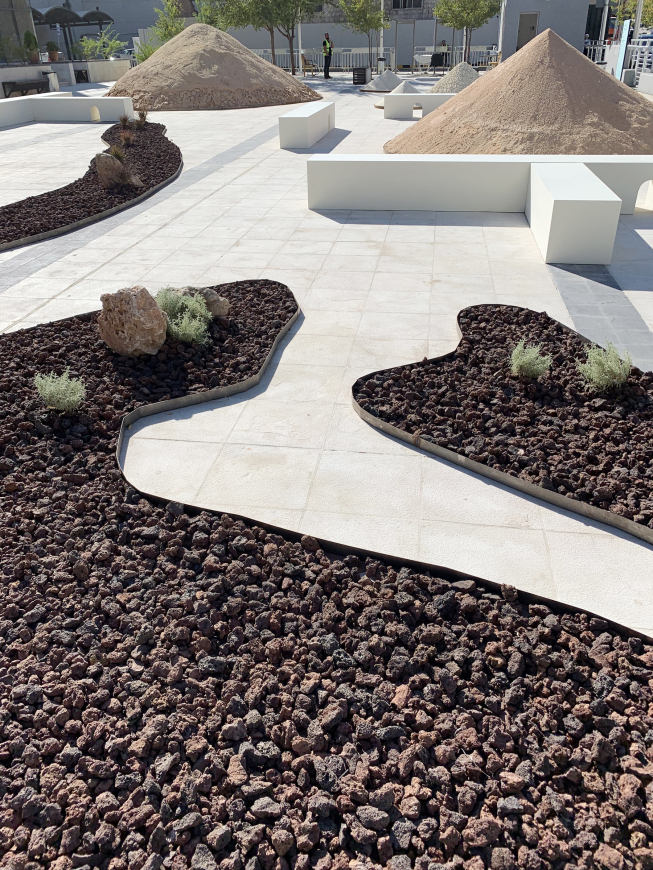
Civil Architecture 与 studiolibani 一起设计的“迷你天堂”,旨在对阿拉伯天堂和绿色殖民概念提出一系列的质疑。东地中海的阿拉伯国家把花园称为小天堂(jnaina):以种植着植物的绿色盒子有序布局组成的空间。穿过阿拉伯半岛,在海湾沿岸,它们则被称为hadayiq,意为“束缚或包围”。在这种背景下,花园作为有限的绿色空间,在20世纪中期之前都是极为罕见的,传统的庭院常常贫瘠而干旱,主要用于洗衣做饭和饲养牲畜。绿色植物作为一种室内幻想,只有那些能够负担得起用于美化或种植水源的奢侈家庭才能够拥有。到今天,海湾地区的景观仍是那种延续下来的幻想:修剪得很好的草坪,翠绿的壁阶——护理或培育的概念都来自于殖民小说。
Civil Architecture and studiolibani presented ‘Minor Paradises’, intended as a series of provocations set against the Arab Paradise and against colonial notions of green. The Arab countries of the eastern Mediterranean refer to gardens as little paradises (jnaina): bounded boxes of green- delicate curation of plants in an ordered composition. Across the Arabian peninsula, on the coast of the Gulf, they are referred to as hadayiq, from the word‚ ‘to bound or encircle’. In this context the garden as bounded space of green was rare until the mid-20th century. Traditional courtyards were often barren – reserved for laundry, livestock and cooking. Greenery as an interior fantasy was reserved only for those who could afford the luxury of water that was spent on beauty or cultivation. Today the Gulf landscape is an inherited fantasy: the well mowed lawn, the verdant setback – notions of care or fecundity that are borrowed colonial fictions.

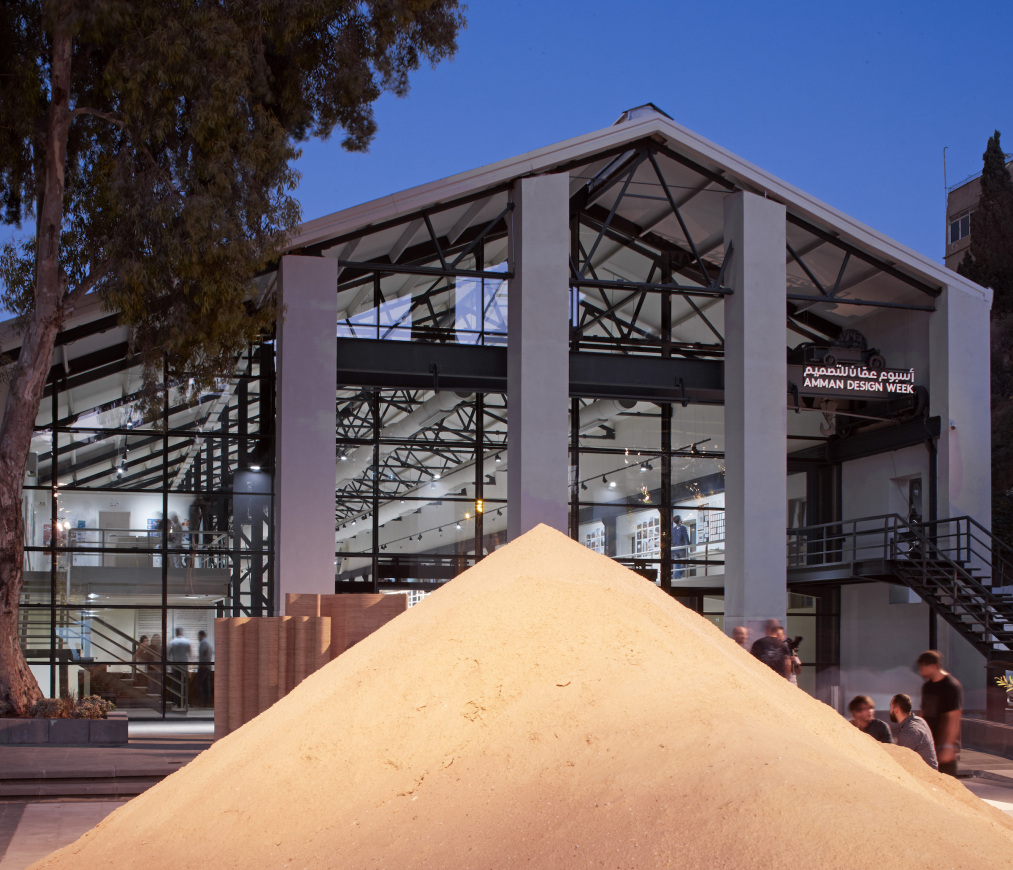
Minor Paradises装置重新审视了庭院和约旦传统的景观概念,并从地域尺度上选取了一些场景,将其重新诠释为人类尺度上的微型景观。用当地的沙子、砾石、火山岩和石灰岩构建出地形和地形条件,重建了当地景观,并规划了游客在Ras Al Ain画廊的体验游线。这些土堆象征着一座座山或土丘,砾石块铺装象征地面或领土,石灰岩象征岩石花园或小型岩石山。这些泥土材料将游客与景观的核心元素联系起来。被推到极限或休止角之外的土堆,形成了不同高度和大小的人工几何图形,既隐藏也展示了这一人造的景观。具有极端耐旱能力的本地物种以组合种植的形式,形成了一种新的、无水美学。由此,该花园提出了一种护理、养护和美观的替代概念。白色的胶合板长凳,反映了庭院作为阿拉伯世界社交空间的类型。这些长凳以不同的配置放,相互作用,为这个人造景观提供了不同的观赏视角。长凳上的小拱门则进一步强调了这个装置是没有界限和规模的。
Minor Paradises revisits the traditional notion of the courtyard and the picturesque Jordanian landscape, and samples scenarios from the territorial scale re-interpreting it as a miniature landscape at human scale. Locally sourced sands, gravel, volcanic rock, and limestone re-create the landscape, construct topography and terrain conditions, and curate the visitor’s experience towards the Ras Al Ain Gallery. The mound is perceived as a mountain or as a hill. The gravel patch as a surface, or as a territory; the limestone rocks as rock gardens or undersized rock mountains. The earthy materials connect the visitor back to the core elements of our landscapes. Mounds of earth material pushed beyond its limits or angle of repose form artificial geometries of varying heights and sizes, concealing and revealing views of this constructed landscape. Local adapted species of extreme drought tolerance appear as clusters negotiating a new, water-less aesthetic. The garden therefore suggests alternative notions of care, maintenance and beauty. The benches in white plywood reflect on the typology of the courtyard as a social space in the Arab world. The benches, laid out in different configurations, allow for interaction and expose different views towards this constructed landscape. Small arches in the benches further emphasize the fact that the installation is that of no scale.


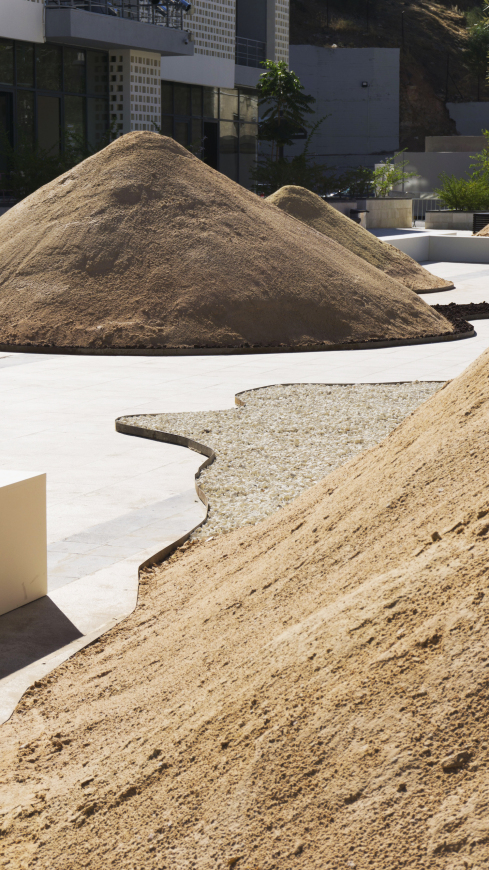
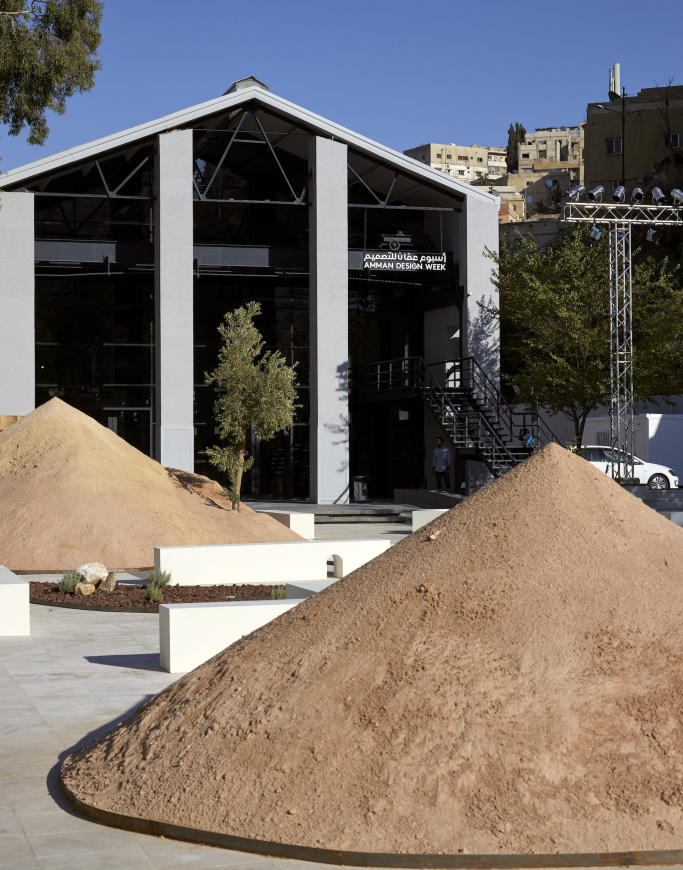
作为一项管理稀缺的实践,这个为期一周的展览花园,由从当地承包商和苗圃租借来的沙子、砾石和本土植物建造而成。这些长凳在安曼设计周结束后,被捐赠给了附近的一个滑板公园。该装置由安曼设计周提供支持,由Anas Al Mikhi及其团队制作完成。
As an exercise in managing scarcity, the construction of the one-week public park was made possible through the ‘loaning’ of sand, gravel and indigenous plants from local contractors and nurseries. The benches were donated to a nearby skate-park at the end of the Amman Design Week. The installation was supported by Amman Design Week and produced by Anas Al Mikhi and team.
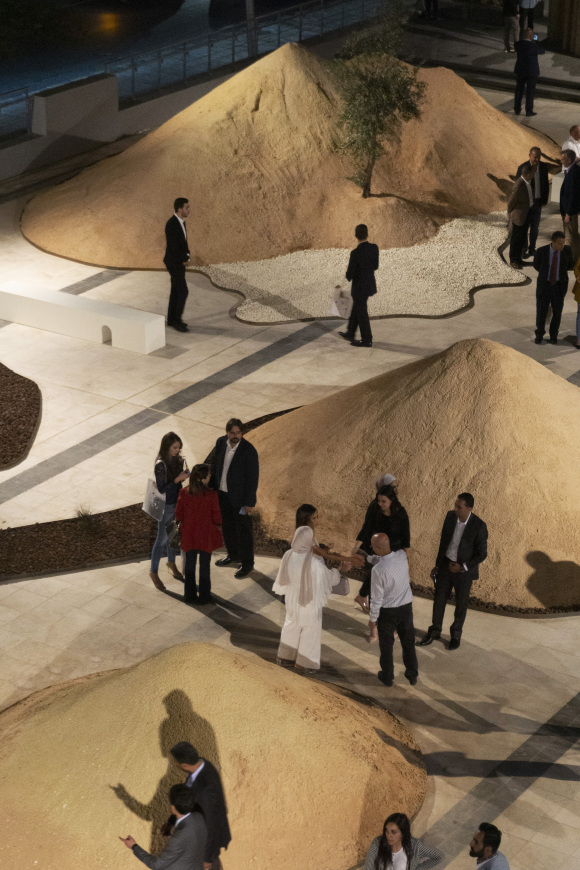
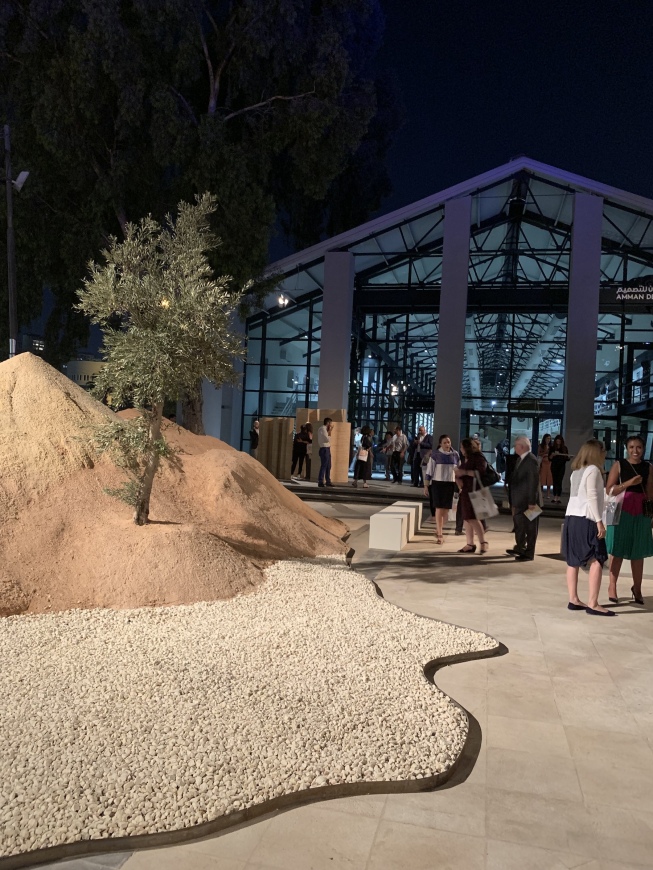
项目名称:迷你天堂
完成:2019年
项目地点:约旦安曼
设计公司:studiolibani & civilarchitecture
公司网址:studiolibani.com / civilarchitecture.org
设计团队:ali karimi, hamed bukhamseen, leah moukarzel, dima rachid
客户:安曼设计周
照片:Edmund Sumner,Amman Design Week 2019
Project name: minor paradises
Completion Year: 2019
Project location: amman, jordan
Design Firm: studiolibani & civilarchitecture
Website: studiolibani.com / civilarchitecture.org
Design Team: ali karimi, hamed bukhamseen, leah moukarzel , dima rachid
Clients: amman design week
Photo credits: Edmund Sumner, Amman Design Week 2019
更多 Read more about: studiolibani, Civil architecture




0 Comments